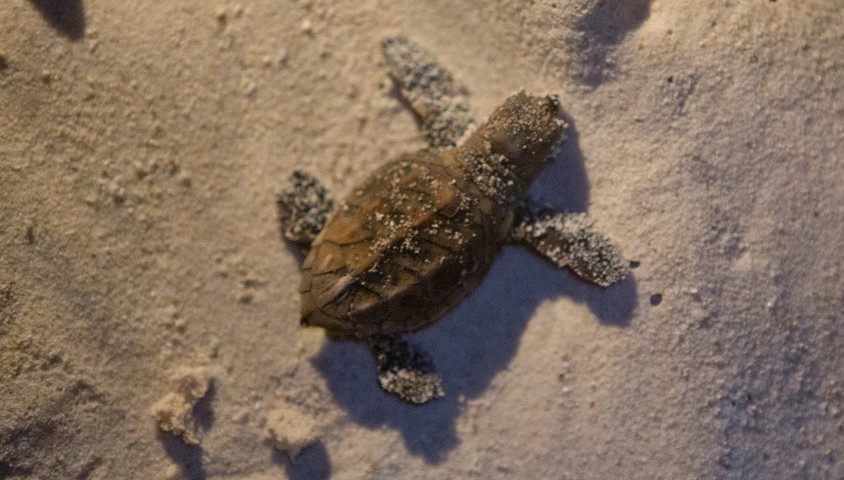The South Pacific’s largest hawksbill turtle rookery shows early signs of recovery according to a recently published report.
The paper, published by The Nature Conservancy and its partners in PLoS ONE, analysed 22 years of beach count and tagging data from the Arnavon Islands which are located in the Solomon Islands. It reveals a dramatic increase in the number of hawksbill turtle nests, making it the only such example of recovery in the region.
The Arnavon Islands are a group of four small islands in the Manning Strait, which lies between Isabel and Choiseul provinces in the Solomon Islands. Visitors to the area arrive by boat after flying in to either of these provinces from the capital Honiara.
As it is the long-term nesting site for the hawksbills, the Arnavons’ rookery has been subjected to exploitation by hunters and commercial traders since the 1800s, resulting in the population dropping to critically low levels by the 1990s. Since that time a number of conservation initiatives have seen the situation begin to turn around.
“I like to say that it’s as if the species is out of intensive care and in the main ward of the hospital, but there’s still work to be done to ensure their future.”

The critically endangered hawksbill sea turtle (Eretmochelys imbricata) is showing early signs of recovery in the Solomon Islands. Photo: Dr. Steve Genkins.
Senior Melanesia scientist for The Nature Conservancy and lead author of the study, Richard Hamilton remarked that the increase in the number of hawksbill nests being laid can be attributed to sound management principles.
“The Solomon Islands were one of the last countries in the world to ban the commercial harvest of hawksbills,” he said. “Since that protective legislation has been introduced, the threat to the turtles has been greatly reduced and we’re seeing more turtles living longer lives, meaning they survive to partake in more breeding seasons.”
During this period, The Nature Conservancy has also partnered with local communities and government to assist in the establishment of the Arnavon Community Marine Conservation Area (ACMCA), which adds a further layer of protection to this endangered species.
As a result, analysis of the turtle population shows hawksbill nest numbers have doubled since their record lows in 1990.
“I like to say that it’s as if the species is out of intensive care and in the main ward of the hospital, but there’s still work to be done to ensure their future,” Hamilton explained. “Hawksbills are still hunted by local people as a food source and there is an illegal trade in this species, both for domestic consumption and for its shell which is used to produce jewellery.”
As with many South Pacific species, the hawksbill is also threatened by climate change as beach erosion increases with sea level rise. Many individuals that nest on the Arnavons feed on sponges and corals in the Great Barrier Reef, so its demise will also have flow-on effects for the turtles.
“As a biologist, and especially as a conservation biologist, it’s very easy to become pessimistic about the future. However I think it’s important to note that here we have an example of a critically endangered species that has been absolutely hammered by commercial interests and yet it’s still managed to bounce back with some simple management practices.”
In the past, creating marine parks and restricted areas was often performed without a deeper level of consultation with local communities, but Hamilton pointed out the success of the ACMCA could be directly attributed to the high level of buy-in sought from nearby communities that retain customary access rights to the Arnavons.
“The small amount of adventure-focused eco-tourism in the area also helps greatly,” he said. “It’s been absolutely critical to bring additional resources and sustainable financing into the Arnavons and nearby communities.”
Visitors to the Arnavons will often partake in turtle counts or tagging activities, digging for megapod eggs and generally enjoying the tropical lifestyle. In particular, Hamilton highlighted the “turtle rodeo” as being a major drawcard.
“Capturing the juvenile green turtles that forage around the Arnavons requires people to chase them on boats before physically leaping into the water and hauling them up onto the deck. It’s important conservation work and its also great fun at the same time.”



